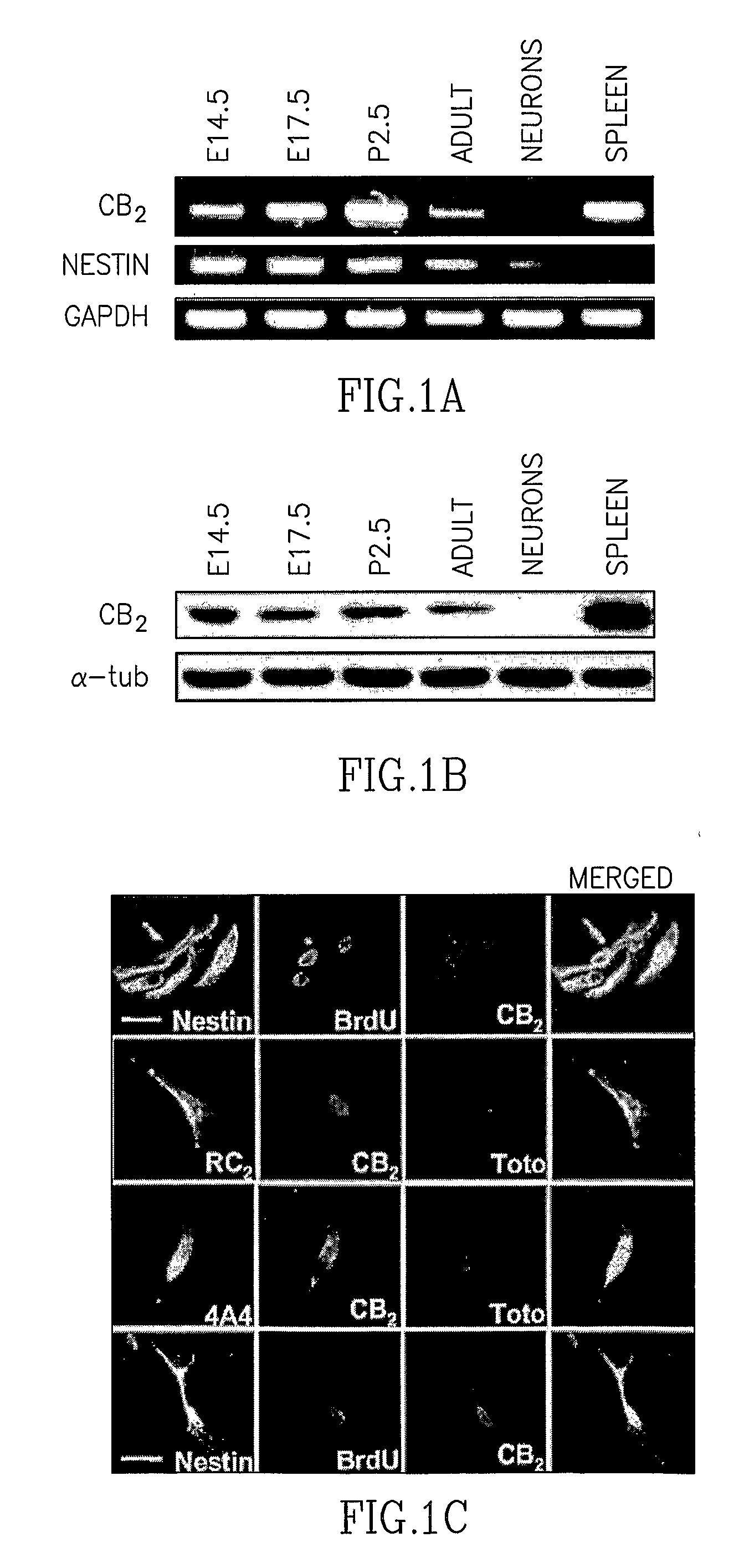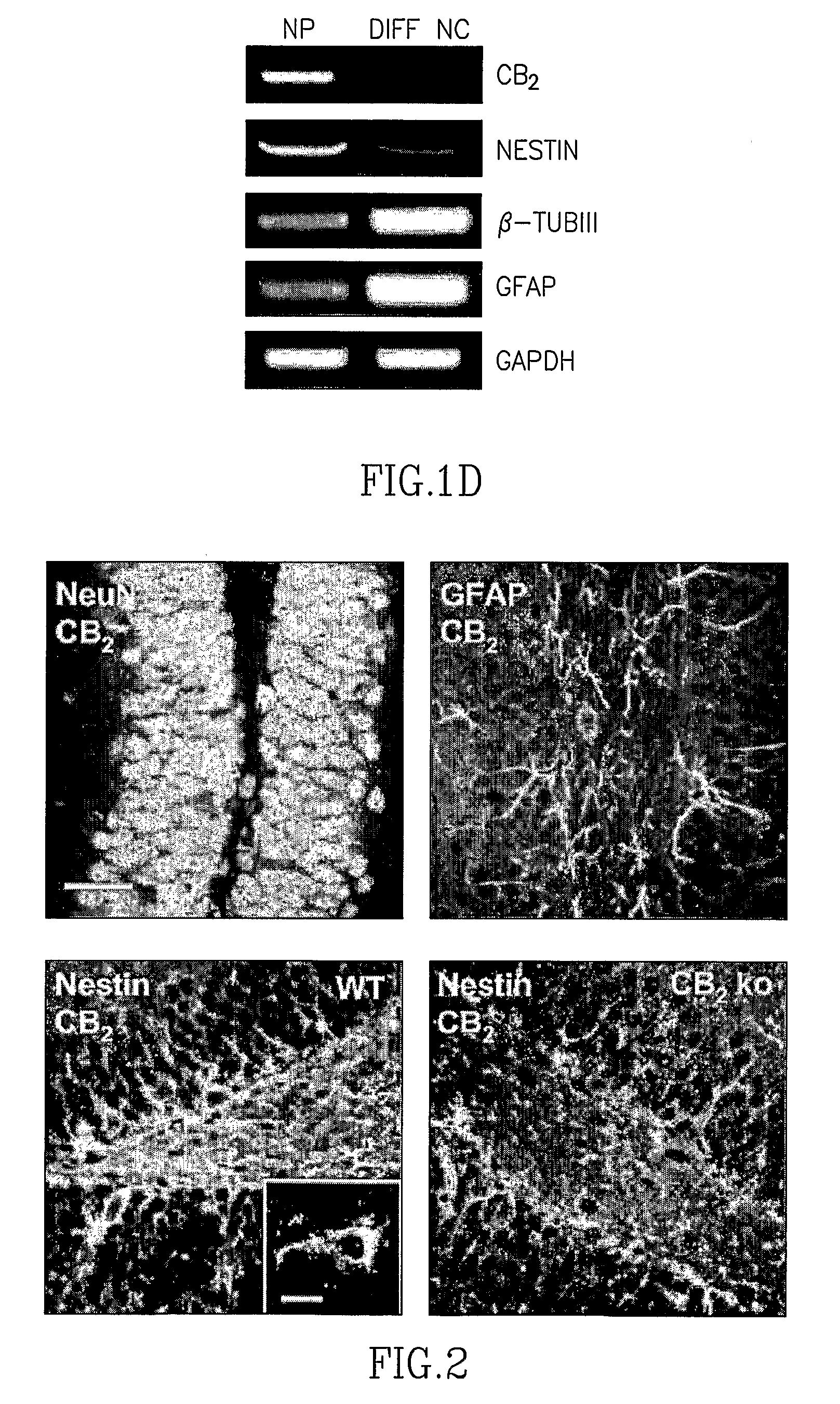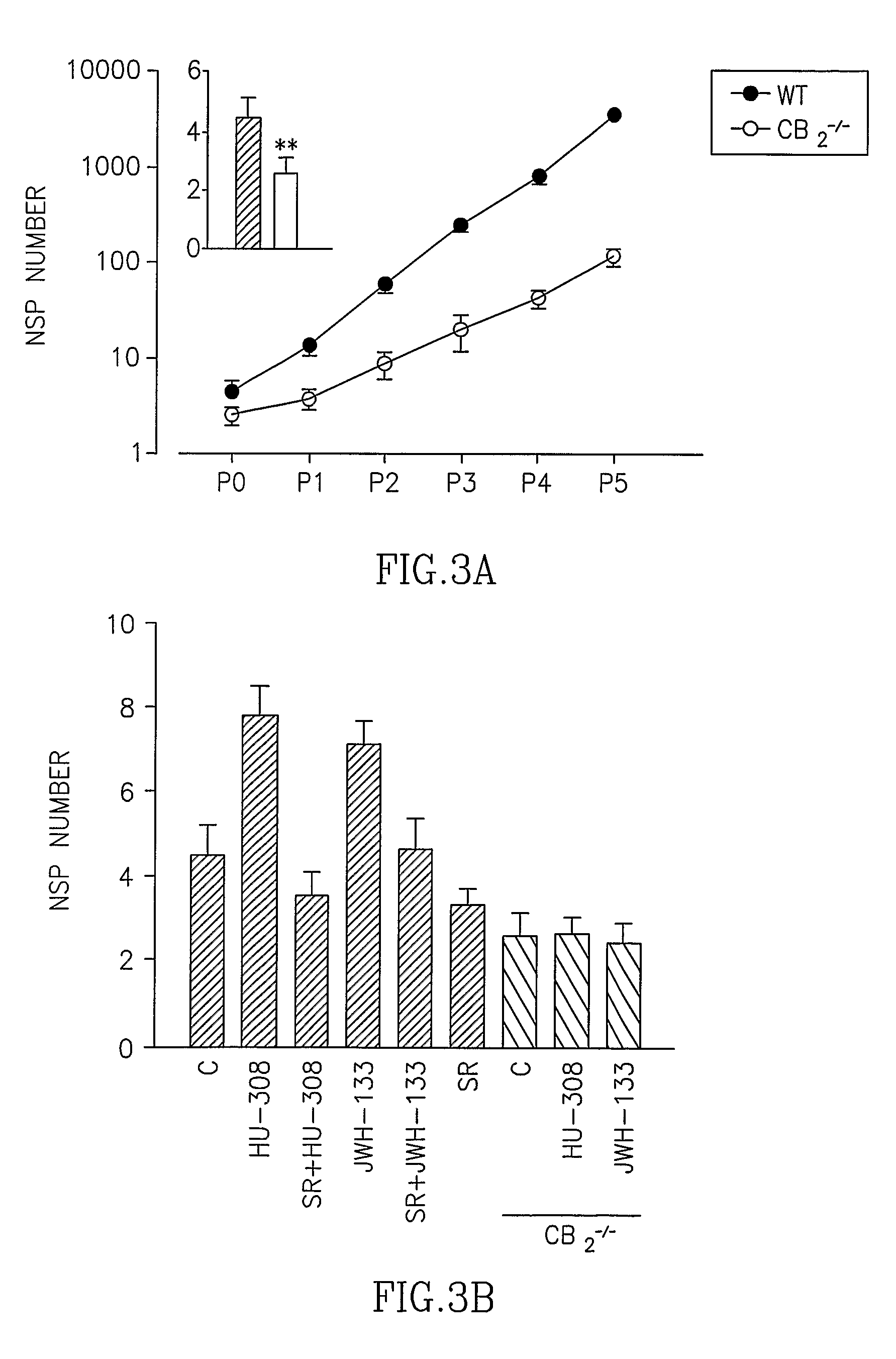Use of cb2 receptor agonists for promoting neurogenesis
a technology of cb2 receptor and agonist, which is applied in the direction of heterocyclic compound active ingredients, biocide, drug compositions, etc., can solve the problems of severe unmet medical needs, death and disability, and the failure of the mammalian nervous system to regenerate after injury, and achieve the effects of stimulating cell proliferation, stimulating neurogenesis, and inducing and enhancing neurogenesis
- Summary
- Abstract
- Description
- Claims
- Application Information
AI Technical Summary
Benefits of technology
Problems solved by technology
Method used
Image
Examples
example 1
Neural Progenitors Express CB2 Receptors In Vitro and In Vivo
[0127]To determine whether neural progenitor cells express CB2 receptors, clonally-expanded neurospheres derived from embryonic and adult brain were generated. Results are shown in FIG. 1.
[0128]FIG. 1 shows that neural progenitors express CB2 receptors in vitro. In each case GAPDH served as internal house-keeping control in the RT-PCR experiments and α-tubulin served as internal control in the Western blots.
[0129]FIG. 1A compares the level of gene expression of the CB2 receptor and nestin in embryonic (E), postnatal (P) and adult neural progenitors as determined by RT-PCR. Differentiated cortical neurons as well as spleen were used as negative and positive controls, respectively.
[0130]FIG. 1B shows the level of protein expression of the CB2 receptor in the previously mentioned cells and tissues, as determined by Western blot.
[0131]FIG. 1C shows the results of a typical immunostaining experiment. Adherent embryonic (four up...
example 2
CB2 Receptors Control Neural Progenitor Cell Proliferation In Vitro
[0137]To determine whether CB2 receptors control neural progenitor cell function, neurospheres from CB2-deficient mice and their wild-type littermates were first generated. Results are shown in FIG. 3.
[0138]FIG. 3 shows that CB2 receptors control neurosphere generation and neural progenitor cell proliferation in vitro.
[0139]FIG. 3A compares the self-renewal ability of E17.5 neural progenitors derived from wild-type (WT) and CB2− / − mice. The number of neurospheres (NSP) was quantified after 5 consecutive neurosphere passages. Inset: Primary neurosphere generation in the two mouse strains (CB2− / − white bar).
[0140]FIG. 3B depicts the amount of primary neurosphere generated after 7 days of exposure of neural progenitors to vehicle (C), the CB2-selective agonists HU-308 or JWH-133 (30 nM) and / or the CB2-selective antagonist SR144528 (2 μM; SR). CB2− / − progenitors were also employed (where indicated).
[0141]FIG. 3C shows th...
example 3
CB2 Receptors Control Neural Progenitor Cell Proliferation In Vivo
[0149]The functional relevance of the CB2 receptor in controlling neural progenitor cell proliferation in vivo was determined by assessing BrdU incorporation in CB2-deficient mice and their wild-type littermates. Results are shown in FIG. 4.
[0150]FIG. 4 shows that CB2 receptors control neural progenitor cell proliferation in vivo.
[0151]FIG. 4A shows the number of BrdU-positive cells per section in the dentate gyrus of wild-type (WT; n=5) and CB2− / − (n=7) mouse E17.5 embryos.
[0152]FIG. 4B shows the number of BrdU-positive cells per section in the dentate gyrus of wild-type (WT; n=4) and CB2− / − (n=3) adult mice injected with the indicated agents.
[0153]FIG. 4C shows the number of BrdU-positive cells per section in the dentate gyrus of wild-type (WT; n=4) and CB2− / − (n=4) adult mice injected with saline (Veh) or kainic acid (KA). Lower panels show representative immunostainings of BrdU-positive cells (light) co-stained wi...
PUM
| Property | Measurement | Unit |
|---|---|---|
| RH | aaaaa | aaaaa |
| temperature | aaaaa | aaaaa |
| body weight | aaaaa | aaaaa |
Abstract
Description
Claims
Application Information
 Login to View More
Login to View More - R&D
- Intellectual Property
- Life Sciences
- Materials
- Tech Scout
- Unparalleled Data Quality
- Higher Quality Content
- 60% Fewer Hallucinations
Browse by: Latest US Patents, China's latest patents, Technical Efficacy Thesaurus, Application Domain, Technology Topic, Popular Technical Reports.
© 2025 PatSnap. All rights reserved.Legal|Privacy policy|Modern Slavery Act Transparency Statement|Sitemap|About US| Contact US: help@patsnap.com



